Your cart is currently empty!
The 6 Forgotten Historical Landmarks in Pennsylvania
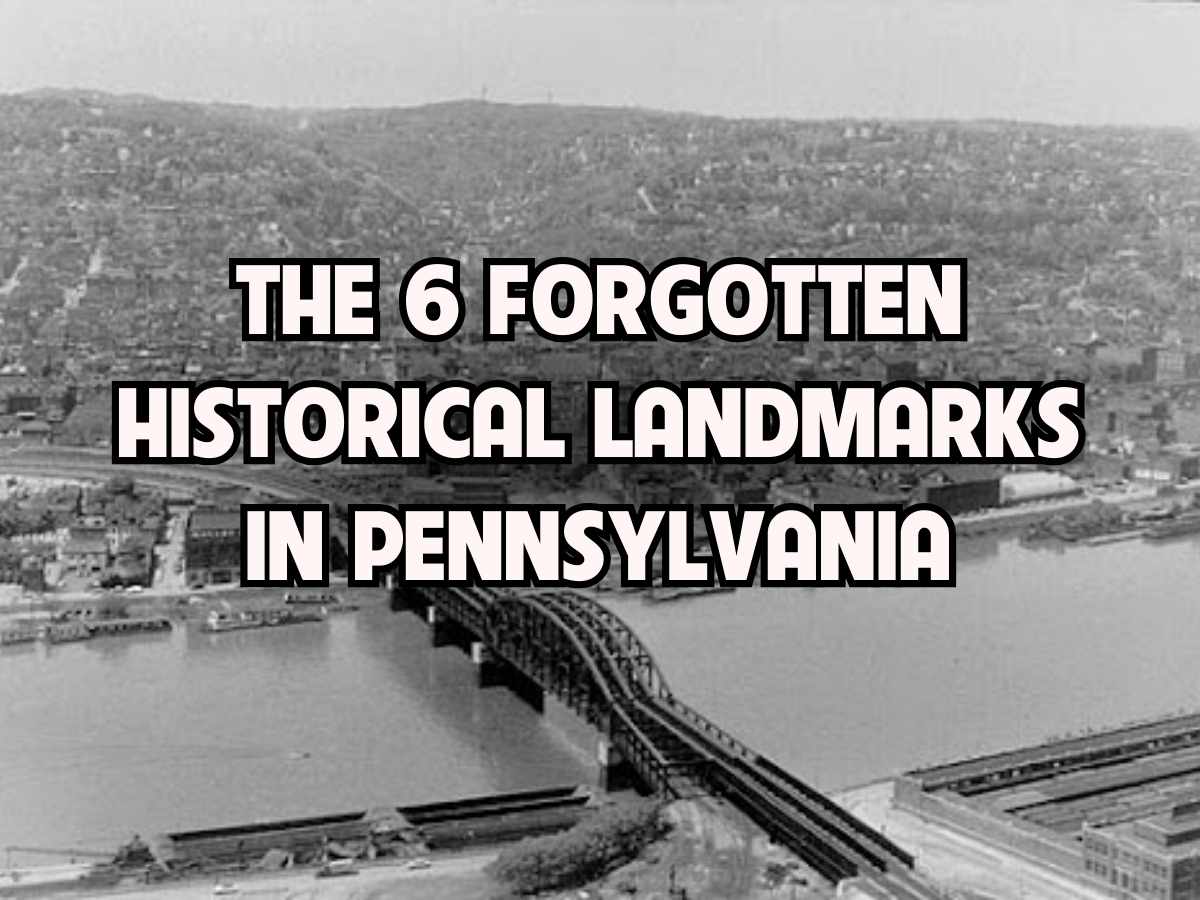
Pennsylvania’s history is written in its landmarks. From the echoing steps of its grand train stations to the opulence of its stately mansions, every brick and beam once held a story. Yet, some of these treasures have slipped through the cracks of time. Let’s dive into a journey by the stories of six lost landmarks that helped shape Pennsylvania—and America. Each of these is a poignant example of the lost historical landmarks in Pennsylvania, representing moments of transformation and resilience. Teeholic is about to show you that.
1. The President’s House (Demolished 1951)
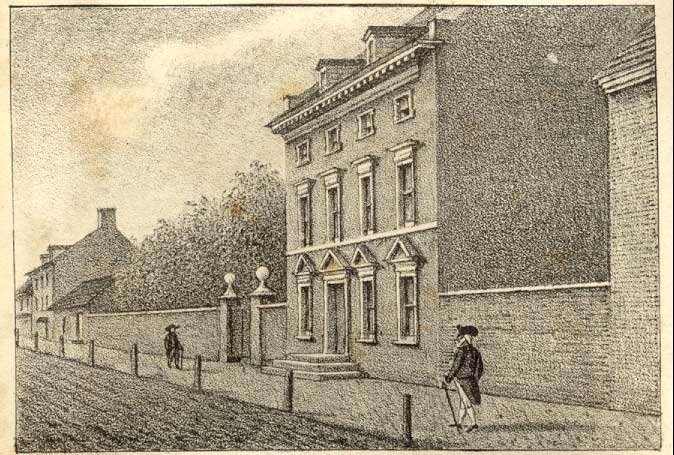
Picture this: Philadelphia in the late 1700s. A young America is finding its footing, and at the heart of it all stands the President’s House—a place where George Washington lived, worked, and hosted diplomats. It was here that the country’s first president made critical decisions that set the tone for a burgeoning democracy.
Yet, by 1951, this cradle of leadership was gone, replaced by modern development. Today, the site is marked by the Liberty Bell Center, but the President’s House remains a sobering reminder of how quickly history can be lost. As one of the forgotten historical sites in Pennsylvania, its story continues to inspire efforts to preserve the state’s cultural legacy.
This wasn’t just a building but the birthplace of executive leadership. Its story teaches us the importance of preserving spaces that tell our nation’s story.
2. The Carnegie Building (Demolished 1952)
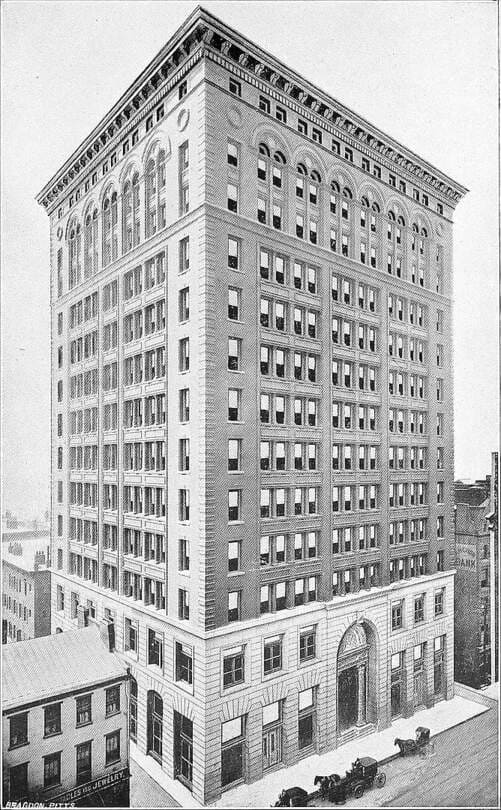
Before Carnegie Mellon University became the global powerhouse it is today, there was the Carnegie Building. Built in 1895, it was more than just a structure—it symbolized Andrew Carnegie’s belief in education as a transformative force.
For decades, this building welcomed the curious and the ambitious. But in 1952, progress demanded its space, and the Carnegie Building was torn down. While it no longer stands, its memory persists as one of the lost historical landmarks in Pennsylvania, showcasing how education and industry shaped the state’s identity.
This is a story of reinvention. Sometimes, even when we lose something beautiful, we can honor its spirit by carrying its mission forward.
3. Broad Street Station (Demolished 1953)
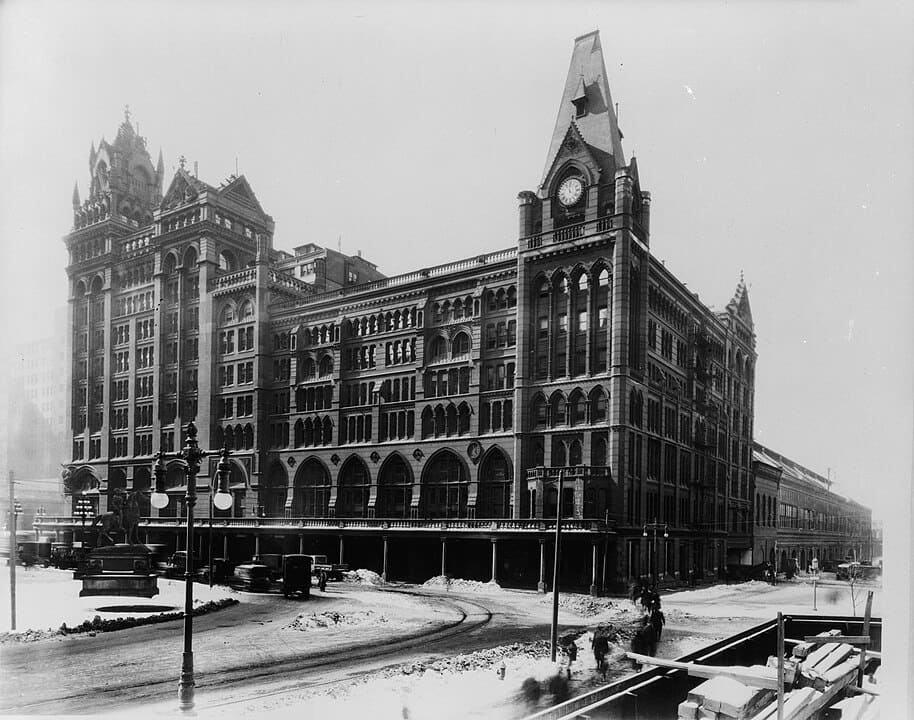
Once a beacon of Philadelphia’s industrial age, Broad Street Station was a masterpiece of design and functionality. Opened in 1881, its towering arches and ornate stonework made it an architectural gem. More than a building, it was a hub where dreams arrived and journeys began.
But as the mid-20th century unfolded, America shifted its focus to highways and cars. By 1953, Broad Street Station was gone, leaving behind only photographs and memories of the golden age of rail travel. This station is remembered as one of the historical sites in Pennsylvania that embodied the bustling energy of a bygone era.
Broad Street Station reminds us to treasure the places where people and possibilities intersect. Even as times change, the human spirit continues to connect and thrive.
4. Wabash Pittsburgh Terminal (Demolished 1954)
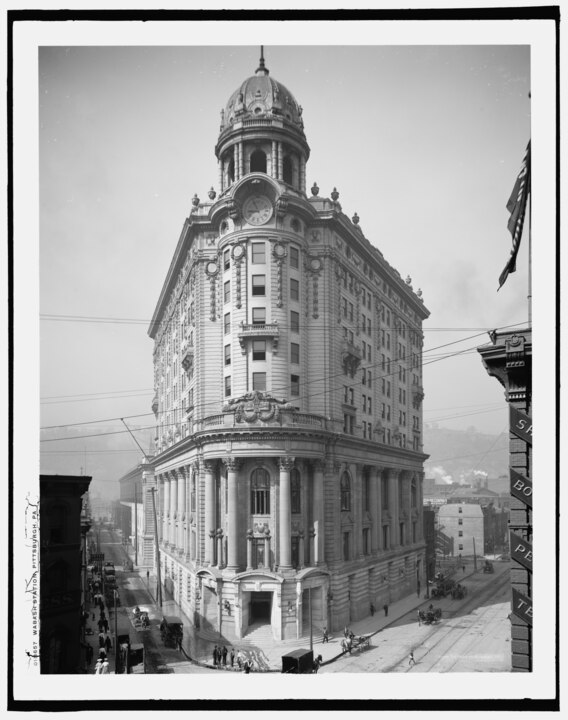
The Wabash Pittsburgh Terminal wasn’t just a train station—it was a declaration of Pittsburgh’s industrial might. Its grand facade and innovative design represented a city on the rise.
Completed in 1904, the terminal connected Pittsburgh to markets and opportunities far beyond its borders. But by 1954, it fell victim to the decline of railroads and urban redevelopment. As one of the significant but forgotten historical landmarks in Pennsylvania, it stands as a testament to the economic shifts that shaped the region’s history.
The Wabash Terminal is proof that even as industries evolve, the human drive to innovate never fades. We can honor the past by building on its lessons.
5. Oak Cottage (Demolished 1972)
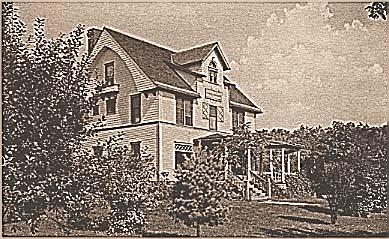
Hidden in the lush greenery of Mount Gretna, Oak Cottage was a retreat like no other. Built during the late 19th century, it served as a haven for the intellectuals and artists of the Chautauqua movement—a space where ideas blossomed and creativity flourished.
But by 1972, time had taken its toll. Neglect and development erased Oak Cottage from the landscape, ending an era of cultural vibrancy in Mount Gretna. Today, it is remembered as one of the most charming and serene historical landmarks in Pennsylvania that sadly no longer exists.
Inspiration: Oak Cottage’s story reminds us of the importance of places that nurture the human spirit. It’s a call to protect the spaces where creativity and connection thrive.
6. Whitemarsh Hall (Demolished 1980)
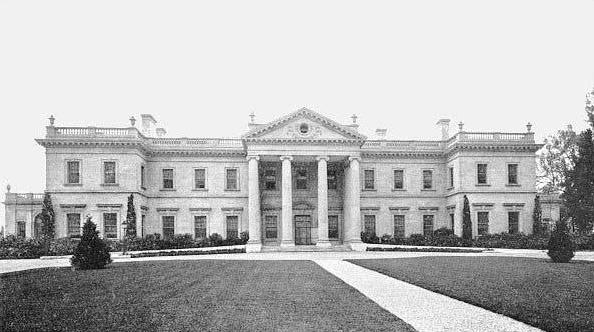
This wasn’t just a mansion; it was a palace. Built in 1921, this 147-room marvel was the crown jewel of Springfield Township. The estate’s gardens rivaled Versailles, and its halls echoed with the voices of high society.
Even grandeur couldn’t withstand time. Maintenance costs spiraled, and by 1980, Whitemarsh Hall was no more. Suburban housing developments now stand where opulence once reigned. As one of the most extravagant historical landmarks in Pennsylvania, its story emphasizes the importance of sustainable preservation for the future.
Whitemarsh Hall is a reminder that beauty requires care and commitment. Its loss inspires us to value and invest in preserving the treasures we inherit.
The Ripple Effect of Lost Historical Landmarks in Pennsylvania
Each of these landmarks holds a lesson. They remind us that history is fragile, and preservation isn’t just about saving buildings—it’s about saving stories. While these sites are gone, their legacies can guide how we protect what remains. The tales of these lost historical landmarks in Pennsylvania urge us to honor the past while embracing the future thoughtfully.
What can we learn?
- Adapt with care: Progress doesn’t have to mean erasure. Thoughtful integration of old and new can honor history while embracing change.
- Tell the stories: Even if the physical structures are lost, their stories can inspire future generations to appreciate and protect their heritage.
- Act locally: Community involvement is crucial. By supporting preservation efforts, anyone can play a role in saving history.
History doesn’t preserve itself—it takes people like you. Whether you’re visiting historical sites, advocating for preservation, or simply sharing these stories, you’re keeping history alive.
How to get involved:
- Explore Pennsylvania’s remaining landmarks and support local heritage organizations.
- Volunteer for preservation initiatives or donate to groups dedicated to safeguarding history.
- Encourage others to appreciate and protect the spaces that tell our shared story.
Some Interesting Facts About Pennsylvania
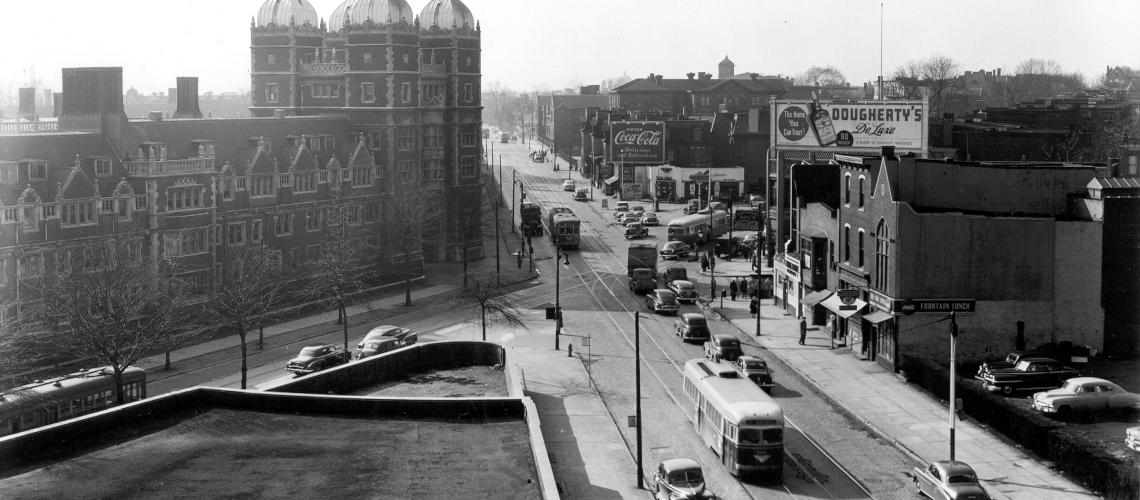
Pennsylvania, known as the Keystone State, holds a wealth of fascinating history and unique trivia. Here are some quick and interesting facts about Pennsylvania:
- Birthplace of the Nation: The Declaration of Independence and the U.S. Constitution were both signed in Philadelphia, Pennsylvania.
- First Capitol: Pennsylvania’s capital was initially in Philadelphia before moving to Harrisburg.
- First University: The University of Pennsylvania, founded in 1740, is one of the oldest institutions of higher education in the U.S.
- Chocolate Capital: Hershey, Pennsylvania, is home to the world-famous Hershey Chocolate Company, earning it the nickname “The Sweetest Place on Earth.”
- Liberty Bell’s Home: Philadelphia is the proud home of the Liberty Bell, an enduring symbol of American independence.
- First Zoo in the U.S.: The Philadelphia Zoo, established in 1874, was the first zoo in America.
- The First Baseball Stadium: The first modern baseball stadium was built in Pittsburgh in 1909, called Forbes Field.
- Pennsylvania’s Forests: Nearly 60% of Pennsylvania is covered in forests, showcasing the state’s rich natural beauty.
- Amish Community: Pennsylvania has the largest Amish population in the U.S., with Lancaster County being a hub for this unique cultural community.
- First Daily Newspaper: America’s first daily newspaper, The Pennsylvania Packet and Daily Advertiser, was published in Philadelphia in 1784.
- Punxsutawney Phil: The famous groundhog who predicts the weather each February 2nd hails from Punxsutawney, Pennsylvania.
- Keystone State: Pennsylvania’s nickname refers to its central role in the founding and development of the United States.
These intriguing facts remind us of Pennsylvania’s diverse history, culture, and innovation contributions.

Inspiration in the Ruins
The forgotten landmarks of Pennsylvania—the President’s House, the Carnegie Building, Broad Street Station, and others—may no longer stand, but their stories are far from forgotten. They’re tales of ambition, creativity, and transformation.
As we look forward, let’s carry these lessons with us. Progress doesn’t have to come at the cost of history. By valuing the past, we can create a future that respects and celebrates the stories that shaped us. These historical landmarks in Pennsylvania inspire us to dream big, preserve boldly, and build thoughtfully.
Are you a Penn-lover?
➣ Check out Teeholic’s Pennsylvania-inspired closet.
Teeholic’s collection of Pennsylvania-printed apparel brings a fresh and stylish way to show off your love for the state.
Whether you’re lounging in a cozy hoodie, rocking a trendy T-shirt, or staying comfortable in a classic sweatshirt, these designs add a unique touch to your wardrobe.
With vibrant, eye-catching prints inspired by Pennsylvania’s iconic landmarks and culture, these pieces are perfect for anyone looking to wear something a little different while keeping things casual.
Perfect for any season, Teeholic’s clothing allows you to express your Pennsylvanian pride in style.




Leave a Reply